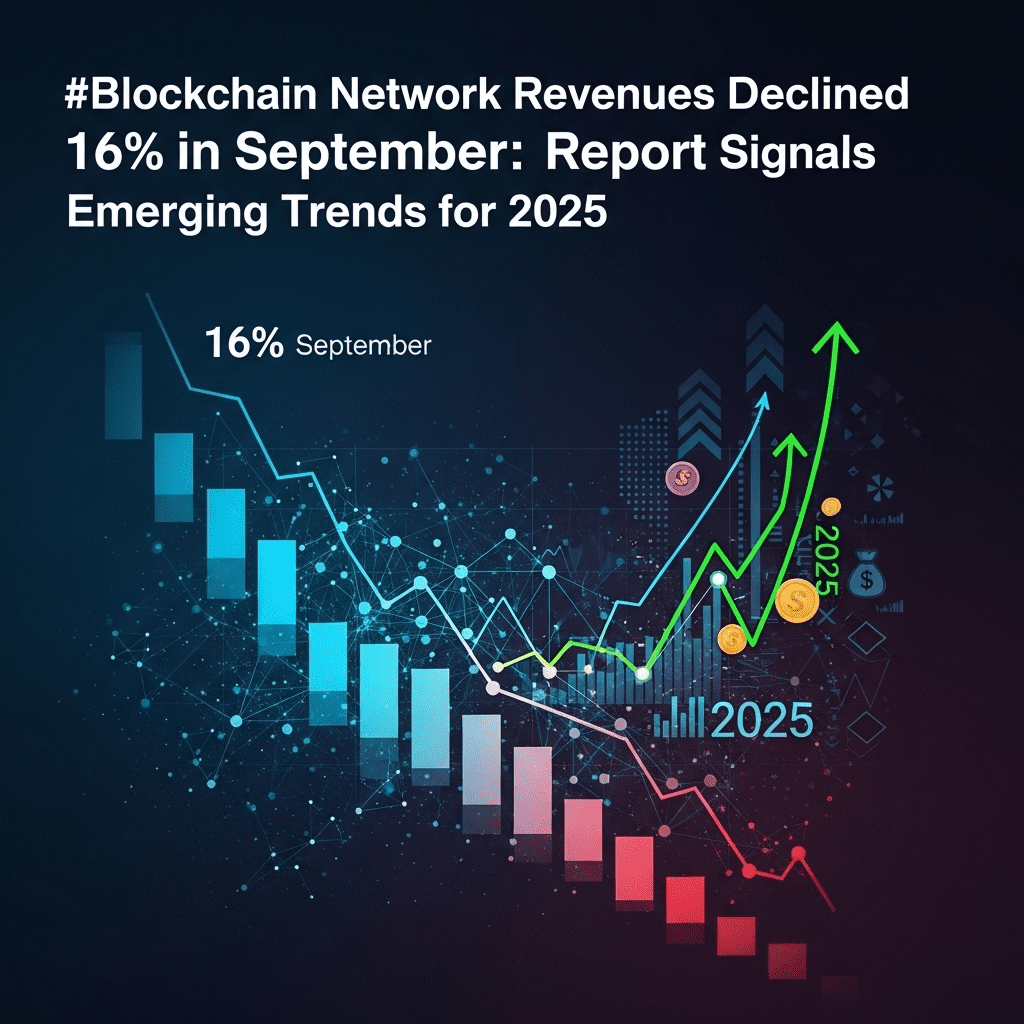Recent data reveals that blockchain network revenues declined 16% in September, signaling a shift in the crypto market dynamics that industry observers cannot ignore. This sharp decrease—contrasted with the steady gains seen earlier this year—raises important questions for investors, developers, and blockchain enterprises alike. In this article, we analyze the causes behind this dip, the broader crypto market conditions, and what these trends could mean for blockchain-based projects heading into 2025.
Blockchain Network Revenues Declined 16% in September: Key Insights
The recent 16% decline in blockchain network revenues in September is the steepest single-month dip recorded in 2024 so far. Various public reports and on-chain analytics show that aggregate revenues—generated through transaction fees, miner rewards, and protocol-level incentives—have taken an unexpected downturn after experiencing gradual recovery periods in the second and third quarters of the year.
This shift is particularly notable as blockchain network revenues often act as an early indicator for future adoption, market sentiment, and capital flows within the crypto asset ecosystem. Blockchain industry experts are closely monitoring these metrics to reassess their strategies as we approach 2025.
Factors Contributing to the Decline in Blockchain Network Revenues
Reduced On-Chain Activity and Lower Transaction Volumes
The immediate driver behind the decline is a drop in on-chain activity across major networks such as Ethereum, Bitcoin, BNB Chain, and Solana. With DeFi protocols witnessing diminished user engagement, NFT transactions leveling off, and reduced trading volume on decentralized exchanges, fee generation—one of the primary sources of network income—has seen a significant reduction.
Fee Optimization and Scalability Solutions
While enhanced scalability is generally positive, solutions like Ethereum L2 rollups, efficient block confirmation mechanisms, and off-chain transactions have led to lower fees per transaction. As users migrate towards cost-saving alternatives, layer-one blockchains may collect smaller aggregate fees, impacting total revenue despite steady or even increasing transaction counts.
Macroeconomic and Regulatory Headwinds
Macroeconomic volatility, persistent inflation concerns, and regulatory uncertainty have discouraged speculative trading and new investments on chain. With geopolitical tensions and shifting monetary policies, many market participants are staying on the sidelines, reducing active participation and thereby network revenue.
Implications for Blockchain Networks and Crypto Investors
Sustainability Concerns for Smaller Communities
The September revenue drop raises sustainability concerns for smaller and emerging blockchain projects that rely on accrued fees to fund development and ecosystem incentives. As revenues shrink, these projects may face increasing pressure to innovate, cut operational costs, or seek alternate funding models.
Shifts in User Behavior
Users are demonstrating increased price sensitivity. Many are opting for blockchains with lower fees and faster settlement times, while some are exploring off-chain solutions or alternative payment rails. Crypto market watchers believe this could accelerate competition among protocols and stratify user bases according to network utility and cost structures.
Investor Watch: Signals for 2025 Strategy
For crypto investors and stakeholders planning for the next year, this downturn serves as a vital signal. It suggests the need to prioritize projects with diversified revenue streams, resilient tokenomics, and real-world utility. The current environment favors layer-two solutions, cross-chain interoperability projects, and applications integrating artificial intelligence for scalable and cost-efficient operations.
Looking Forward: Can Blockchain Network Revenues Rebound?
Innovation and Expansion of Use Cases
The downturn in September is not unprecedented. Historically, blockchain network revenues have exhibited cyclical patterns, with technology upgrades and new applications often reversing downward trends. The rise of real-world asset tokenization, enterprise blockchain deployments, and global payment solutions may contribute to a potential rebound in the coming quarters.
Potential for DeFi and Institutional Growth
Decentralized finance (DeFi) protocols and institutional adoption remain critical to blockchain revenue growth in 2025. Pending regulatory clarity and improvements in security could reignite interest and unlock fresh capital, increasing both transaction frequency and value. Emerging trends, such as regulated DeFi, stablecoin innovations, and compliant on-chain derivatives, are poised to shape future revenue streams.
Conclusion: Navigating Volatility in Blockchain Network Revenues
The fact that blockchain network revenues declined 16% in September is a timely reminder of the volatility inherent in crypto markets. However, it is also an opportunity for projects and investors to recalibrate their strategies as the sector matures. As we advance toward 2025, adaptability, technological innovation, and a keen awareness of market signals will be paramount for blockchain stakeholders navigating these challenging yet opportunity-rich times.
